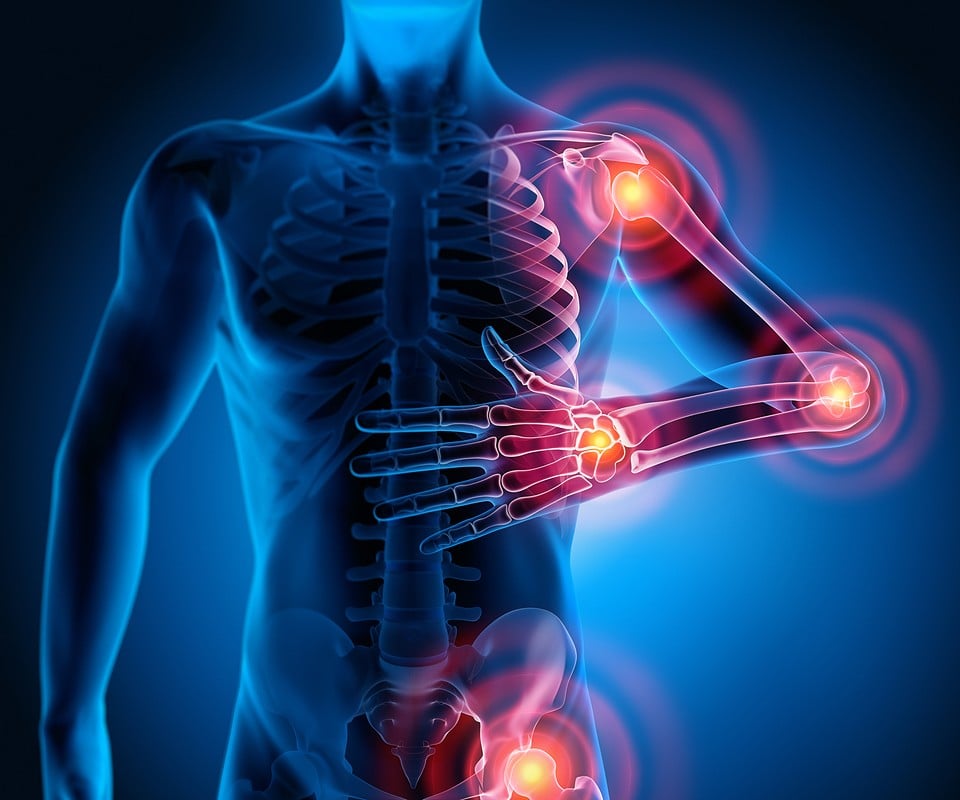Lyme Carditis: Pathophysiology and Clinical Management
With nearly half a million people diagnosed annually, Lyme disease is the fastest-growing vector-borne disease in the United States, and is becoming increasingly widespread. Lyme is a tick-borne infectious disease caused by the spirochete bacteria, Borrelia burgdorferi.
Although Lyme disease is prevalent, research is underfunded and many healthcare providers aren’t trained to properly diagnose and treat Lyme and other complex tick-borne infections. This leaves many infected patients untreated and at risk for acute or chronic diseases, such as Lyme carditis, Lyme arthritis, neurologic Lyme, nervous system dysfunction, gastrointestinal issues, and a host of other multi-systemic conditions.
What is Lyme Carditis?
Lyme carditis occurs when the Borrelia bacteria enter and infect cardiac tissue, causing inflammation (myocarditis, pericarditis, or endocarditis), and disrupting the electrical conduction system of the heart. Ninety percent of Lyme carditis cases may present with a heart block, specifically an atrioventricular block, which causes abnormal heart function.
In addition, the bacterium may directly damage the heart tissue by invading the heart muscle or the heart's conduction (electrical) system, leading to conduction abnormalities and heart block. Electrical signals from the heart's upper chambers are not properly relayed to the lower chambers, dramatically slowing the heart rate.
The severity of the heart block can fluctuate rapidly and the progression to a complete heart block can be fatal. Additionally, Lyme carditis can affect other parts of the heart’s conduction system, as well as the heart’s muscles, valves, and outer layer of the heart wall.
Furthermore, Lyme carditis may sometimes be part of an autoimmune inflammatory process. The immune system sees the bacteria as a threat and sends antibodies to attack it. However, because the heart tissue has already been infected by the bacteria, the antibodies also attack the heart tissue, causing even more damage.
Epidemiology of Lyme Carditis
The Centers for Disease Control and Prevention (CDC) estimates that there are approximately 476,000 new cases of Lyme disease each year in the United States. Studies have shown that Lyme carditis can occur in as many as 4-10% of Lyme cases1, which means there are likely between 19,040 and 47,600 new cases of Lyme carditis annually. In Lyme endemic areas of the United States, where Lyme disease is more common, the incidence of Lyme carditis may be higher.
However, some Lyme experts like Adrian Baranchuk, MD, from the Department of Medicine at Queens University in Canada, believe that the number of Lyme carditis cases might be much higher because only symptomatic individuals treated by Lyme-educated medical practitioners receive proper testing like serological tests and electrocardiograms. Dr. Baranchuk feels that many more people who contract Lyme have some level of cardiac inflammation and conduction abnormalities at a subclinical level on initial presentation. Still, these are missed if no electrocardiogram (ECG) is performed.
Symptoms of Lyme Carditis
Lyme carditis can cause a range of symptoms. These symptoms can vary from person to person and can be mild or severe. While some patients experience severe symptoms, others may experience none at all, which contributes to the elusive nature of the diagnosis. Common symptoms of Lyme carditis include:
- Palpitations: rapid or irregular heartbeat that can be felt as a fluttering or pounding sensation in the chest.
- Chest pain: sharp, stabbing pain or discomfort in the chest, which can be mistaken for a heart attack.
- Fatigue: feeling extremely tired and having a lack of energy.
- Shortness of breath: difficulty breathing, especially during physical activity or exertion.
- Dizziness or lightheadedness: patients may feel faint or dizzy, which can be a sign of decreased blood flow to the brain.
- Syncope: fainting or passing out.
- Flu-like symptoms: fever, chills, body aches, and other symptoms that are similar to the flu.
Management of Lyme Carditis
The management of Lyme carditis usually involves a combination of supportive care to manage symptoms and prevent complications:
- Antibiotics: oral or intravenous antibiotics, depending on the severity of carditis.
- Hospitalization: in some cases, patients with Lyme carditis may require hospitalization for monitoring, temporary cardiac pacing, intravenous antibiotics, and supportive care.
- Symptomatic treatment: may involve medications to manage symptoms such as palpitations, chest pain, and shortness of breath. These may include beta-blockers, antiarrhythmics, and other medications to support heart function.
- Monitoring: close monitoring for any changes in condition, including the progression of symptoms or the development of complications. This may include an MRI, X-ray, ECG, Holter monitor, and/or blood tests.
- Electrocardiogram (ECG): to evaluate the electrical activity of the heart and detect any abnormalities that may require treatment. Top researchers like Dr. Baranchuk propose that everyone with confirmed Lyme should receive a proper cardiac physical exam and an ECG as the standard of care.
- Pacemaker (temporary or permanent): a pacemaker implantation can be an effective treatment for those with a high-degree atrioventricular block from Lyme carditis.
- Prevention: patients with Lyme carditis should take steps to prevent future tick bites and reduce their risk of Lyme disease, including wearing protective clothing, using tick repellents, and checking for ticks after spending time outdoors. For more information, see our Tick Bite First Aid page.

Identification and Diagnosis
If you present with a heart block, we recommend using Dr. Baranchuk’s evaluation methods to identify if Lyme disease is the underlying cause of cardiological issues. The first method is the Suspicion Index of Lyme Carditis (SILC). The SILC score evaluates the likelihood that a patient’s high-degree AV block is caused by Lyme carditis. Below are the variables and their point value:
- Age less than 50 with cardiac manifestations: 1 point
- Male gender (5:1 higher cardiac risk): 1 point
- Outdoor activity/endemic area: 1 point
- Constitutional symptoms (fever, malaise, arthralgia, dyspnea): 2 points
- Tick bite: 3 points
- Erythema migrans rash (can be bulls-eye but not always): 4 point
Your total score indicates your risk for Lyme carditis:
- 0-2: low risk
- 3-6: intermediate risk
- 7-12: high risk
Dr. Baranchuk also notes that one can use the acronym COSTAR to remember these factors:
- Constitutional symptoms of Lyme, such as fever, malaise, joint pain, and lack of energy.
- Outdoor activity in an endemic region.
- Sex: males have a higher inclination toward cardiological manifestations (5 to 1).
- Tick bite: not every patient has a known tick bite but if so, it highly increases the possibility of diagnosis.
- Age: you are under 50 and present with cardiological manifestations.
- Rash: you have a shutdown of the electrical system plus rash, it is Lyme carditis until proven otherwise.
Based on your scores, your provider will need to order serological tests and you may need to begin intravenous antibiotics. You may also receive a temporary pacemaker for additional support with regular ECG monitoring. For more information, we recommend reviewing Dr. Baranchuk’s methods published in the Journal of the American College of Cardiology.2
Importance of Prompt Recognition and Treatment of Lyme Carditis
Prompt recognition and treatment of Lyme disease are of critical importance to prevent the development of Lyme carditis and other complications of the disease. If a patient with Lyme disease (or in a Lyme-endemic area) develops symptoms of Lyme carditis, such as chest pain, palpitations, shortness of breath, dizziness, or lightheadedness, they should seek medical attention immediately.
The standard protocol for high-degree (third-degree) heart block calls for implanting a permanent pacemaker. However, the heart block in Lyme carditis will most likely resolve with antibiotic therapy. Thus, identifying Lyme carditis as the underlying cause of the heart block can prevent the unnecessary implantation of permanent pacemakers.
The battery of a pacemaker lasts 7-10 years and a missed diagnosis could subject an otherwise young, healthy patient to 5-7 battery replacements over a lifetime—with each procedure bringing potential adverse events. These risks associated with the initial pacemaker implantation can be mitigated by intravenous and oral antibiotic treatment for heart block caused by Lyme carditis.
If you suspect you have been suffering from untreated Lyme disease or have Lyme with any of the symptoms mentioned, please contact your healthcare provider as soon as possible. At CCFM, we have a team of clinicians ready to help you properly diagnose and treat Lyme disease and Lyme-related conditions.
References:
- Fish, A. E., Pride, Y.B., Pinto, D.S. (2008). Lyme carditis. Infectious Disease Clinics of North America, 22(2), 275-88. https://doi.org/10.1016/j.idc.2007.12.008
- Yeung, C. & Baranchuk, A. (2019). Diagnosis and Treatment of Lyme Carditis. Journal of the American College of Cardiology, 73(6), 717–726. https://doi.org/10.1016/j.jacc.2018.11.035
- Baranchuk, A. (2022). Lyme carditis review with Dr. Adrian Baranchuk. Project Lyme. https://projectlyme.org/lyme-carditis-review-with-dr-adrian-baranchuck/
- Allen, E. (2023). Mercy Hospital ordered to pay $6.5 million to family of man who died after misdiagnosis. Press Herald. https://www.pressherald.com/2023/02/02/mercy-hospital-ordered-to-pay-6-5m-to-family-of-man-who-died-after-misdiagnosis/






